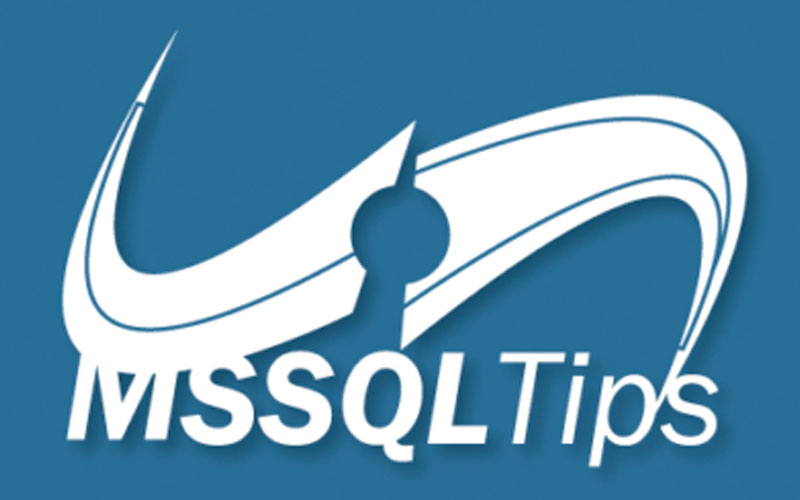I talk about how I use dynamic SQL to handle many databases with not-quite-identical schema.
I discuss my roller coaster of emotions since learning that SQL Server 2022 would support instant file initialization for log files.
In this tip, I take a quick look at some changes to Always Encrypted that make it easier to use.
I've long been pro-schema-prefix, but in this post I talk about an exception to the rule at Stack Overflow, and why it works well.
I show how GENERATE_SERIES makes for easier set building, and decent alternatives while you're still stuck on older versions.
While it might promote less than ideal practices, I show how to use a DDL trigger to keep views in sync with a volatile schema.
In the final part of this series, I convert my T-SQL code to MySQL, so you can build a fancy archives page in WordPress.
Certainly not to encourage people to stay on ancient versions if they don't have to, I took a crack at replicating TRY_PARSE on older versions.
I show that a new experimental feature in Docker 4.16+ lets you run "real" SQL Server on Apple M1+ chips.
For my first post on Simple Talk, I rip apart a made-up stored procedure as if I had encountered it during a code review.
In the second part of this series, I show how to use a calendar table to simplify rendering an archives page.
I recently added a switch and an adapter to take much better advantage of AT&T's 5-gig service.
A good round of updates for most modern versions of SQL Server, including the first cumulative update for SQL Server 2022.
I started a short series on building visual calendars, like those seen in the monthly archives page here.
I discuss an organization’s responsibility for protecting personal information.
For T-SQL Tuesday #158, I talk about a couple of justifiable worst practices.
The story behind new SQLBlog-branded clothing (with proceeds going to The Trevor Project and Black Lives Matter).
I talk about some of the pivotal criteria guiding how Stack Overflow will migrate to Azure.
I recognize this year's recipient of my Community Influence of the Year award.
I talk about my foray into mentoring, and how you should mentor for a career, not just for a role.
In part 3, I show how to automate creating new tables, dropping old tables, and adjusting the view.
In part 2, I look at general strategies for partitioning an archive table (even without Enterprise!) to reduce long-term data movement.
For T-SQL Tuesday #156, I talk about the qualities I expect in T-SQL code before I consider it "production quality."
In this series, I look at strategies for archiving data and how it can impact your entire infrastructure.
For October's T-SQL Tuesday, Steve Jones asks us to talk about ways we've used dynamic SQL to solve problems.
In this tip, I show how to simplify calculations involving nth weekday or non-weekday, with and without a calendar table.
For this month's T-SQL Tuesday, I talk about a not-quite-yet-announced feature in SQL Server 2022 that has the potential to function as a low-effort bad habit logger.
I look at DBA, DBRE, and SRE roles and share how they have differed in my experience.
I talk about ways to use wrapper functions to work around tedious syntax required by the new function, GENERATE_SERIES.
For this month's T-SQL Tuesday, I talk about the community event that had the most profound impact on my career and, more importantly, my life.
On the 10th anniversary of SQLPerformance.com, I look back on my favorite posts – one from each year.
For this month's T-SQL Tuesday, Deb Melkin asks us get up on our favorite soapbox. I have so many, but this time I picked a new one…
Logging tables get huge, and date range queries get more if they don't use the clustered index. Here's one way I've addressed the issue.
Using a fictitious future timeline, I explain how CUs and GDRs differ and why build number alone might not tell the whole story.
In this article, I discuss several advantages to maintaining a technical blog.
I talk about a few of the things I worked on in my first month as a DBRE at Stack Overflow.
In this tip, I show some real-life reasons why you may not want to create all the partitions you'll ever need up front.
I talk about why I prefer CONVERT over CAST to be consistent. Basically, if you sometimes HAVE to use only one, why not just ALWAYS use that one?
There are often multiple ways to express a query and get the same results, often without any change in performance. Learn about one example.
In this tip, I talk about the compatibility between major versions and SQL Server's internal database version.
I continue looking at some of the changes in SQL Server 2022 that aren't on the marketing slides.
I talk about some of the things I do to be more productive, and hopefully some of these can help you in your role, too.
I warn about a cumbersome change to setup, where something is checked by default when it shouldn't be.
The first public preview of SQL Server 2022 is here! Read about my favorite T-SQL enhancements.
I take a look at some of the underlying changes in SQL Server 2022, as reflected in system metadata.
Today I received a mind-blowing award for my 200th tip at MSSQLTips.com.
My first technical job was taking horse bets at an off-track bar when I was 17.
In 2015, I wrote about a stored procedure to find strings within all tables across all user databases. In this follow-up tip, I enhance the procedure to optionally include views and search within specific databases.













































